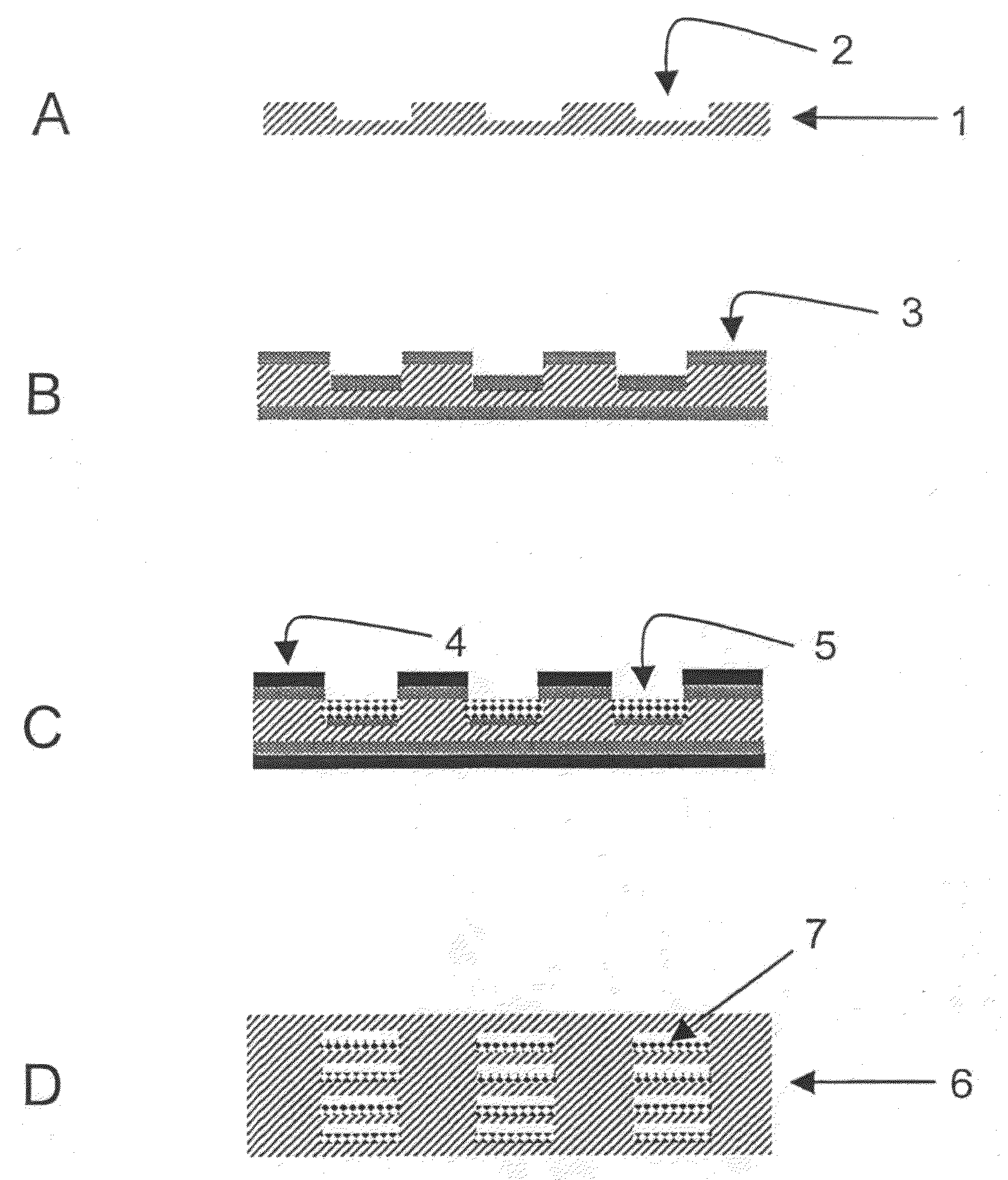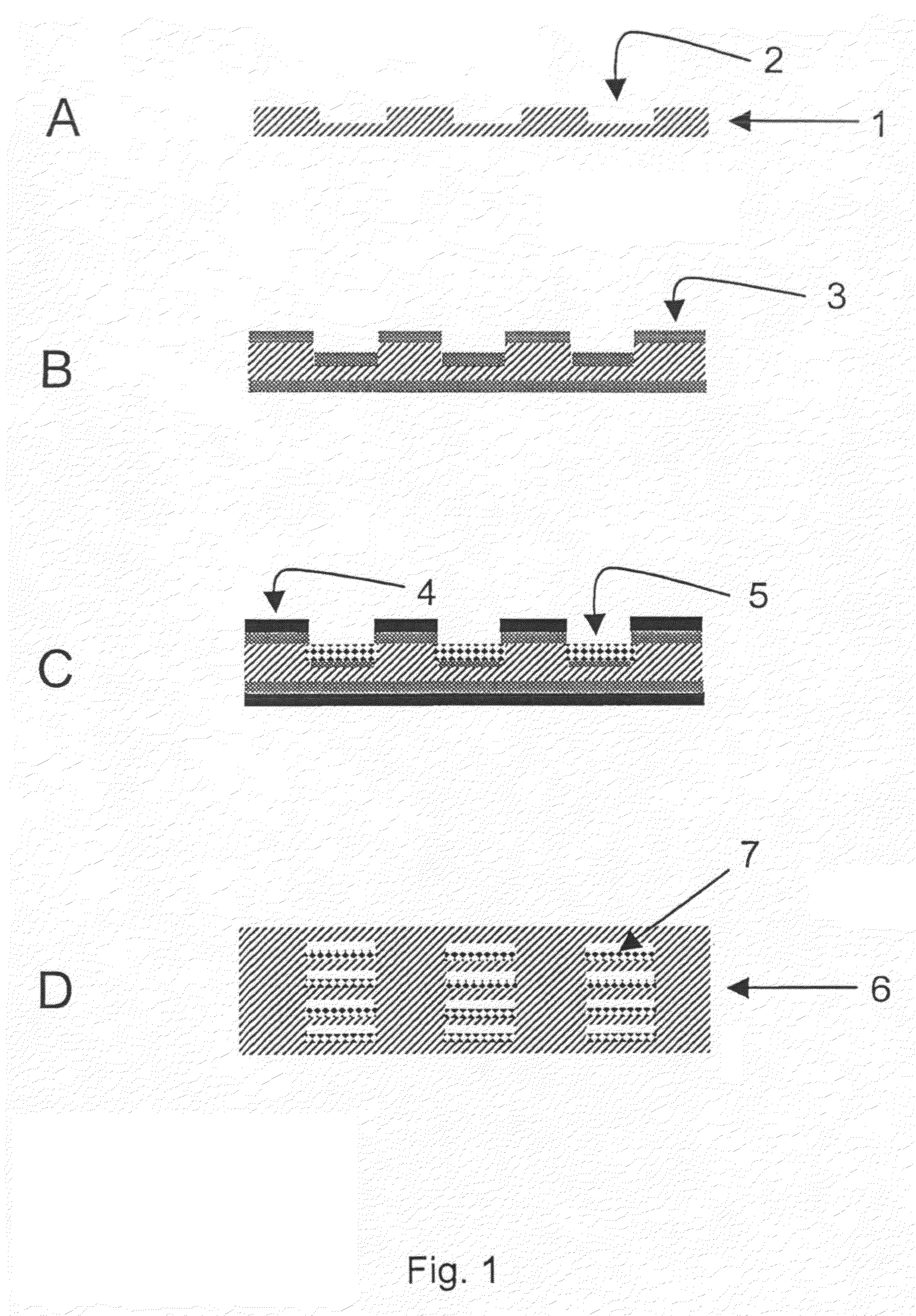Process for manufacturing a microreactor and its use as a reformer
a technology of microreactor and reformer, which is applied in the direction of inorganic chemistry, fuel cells, applications, etc., can solve the problems of clogging of channels, reaction occurring prematurely or continuing outside of the structured reactor core, and the form of commercializing coatings and catalysts cannot, or only conditionally, be used in the micro-structured reactor, etc., to achieve high homogeneity, corrosion stability and strength, and reduce bonding temperature
- Summary
- Abstract
- Description
- Claims
- Application Information
AI Technical Summary
Benefits of technology
Problems solved by technology
Method used
Image
Examples
example 2
A Micro-Structured Reactor Made from Nicrofer 3220H and Bonded at 800° C. for Methane Steam Reforming:
[0095]Metal sheets made from Nicrofer 3220H were structured by means of photolithography and chemical etching. For this purpose, one of the methods described in DE 197 08 472 C2 were used. For each reactor layer, 21 channels having a cross section of 0.5 mm×0.25 mm and a length of 28 mm were formed in the metal sheet. The overall volume of the channels of one metal sheet was 115 mm3. Further, a cover plate and a bottom plate were produced for terminating the reactor stack. Through bores for the reactor connections were drilled in the cover plate.
[0096]Prior to applying a bonding layer onto the bonding areas and the passageways, the reactor sheet was cleaned and pre-treated. This procedure comprised the following discrete steps: 1) degreasing, 2) pickling, 3) electrolytic degreasing, 4) etch cleaning / pickling. In the last pre-treatment step, metallic deposition of the bonding layer w...
example 3
A Micro-Structured Reactor Made from Nicrofer 3220H and Bonded at 1100° C. for Methane Steam Reforming
[0103]The process sequence for producing the reactor corresponds to the one described in Example 2 except that this reactor was bonded for 1 h at a temperature of 1100° C. This temperature corresponds to the temperature typically used for diffusion welding with this material Nicrofer 3220H.
[0104]The performance data of the micro-structured reactor for methane steam reforming are summarized in Table 1 and FIG. 5.
[0105]It could be evidenced that[0106]1. According to the method of the invention, the performance of the reactor bonded at 800° C. (Example 2) is significantly increased over the performance of the reactor bonded at 1100° C. (Example 3) with respect to educt conversion at the same working point; this allowed showing that the reduction of the bonding temperature according to the method of the invention directly has a positive influence onto the catalyst activity and, as a res...
PUM
| Property | Measurement | Unit |
|---|---|---|
| thickness | aaaaa | aaaaa |
| channel depths | aaaaa | aaaaa |
| temperature | aaaaa | aaaaa |
Abstract
Description
Claims
Application Information
 Login to View More
Login to View More - R&D
- Intellectual Property
- Life Sciences
- Materials
- Tech Scout
- Unparalleled Data Quality
- Higher Quality Content
- 60% Fewer Hallucinations
Browse by: Latest US Patents, China's latest patents, Technical Efficacy Thesaurus, Application Domain, Technology Topic, Popular Technical Reports.
© 2025 PatSnap. All rights reserved.Legal|Privacy policy|Modern Slavery Act Transparency Statement|Sitemap|About US| Contact US: help@patsnap.com



